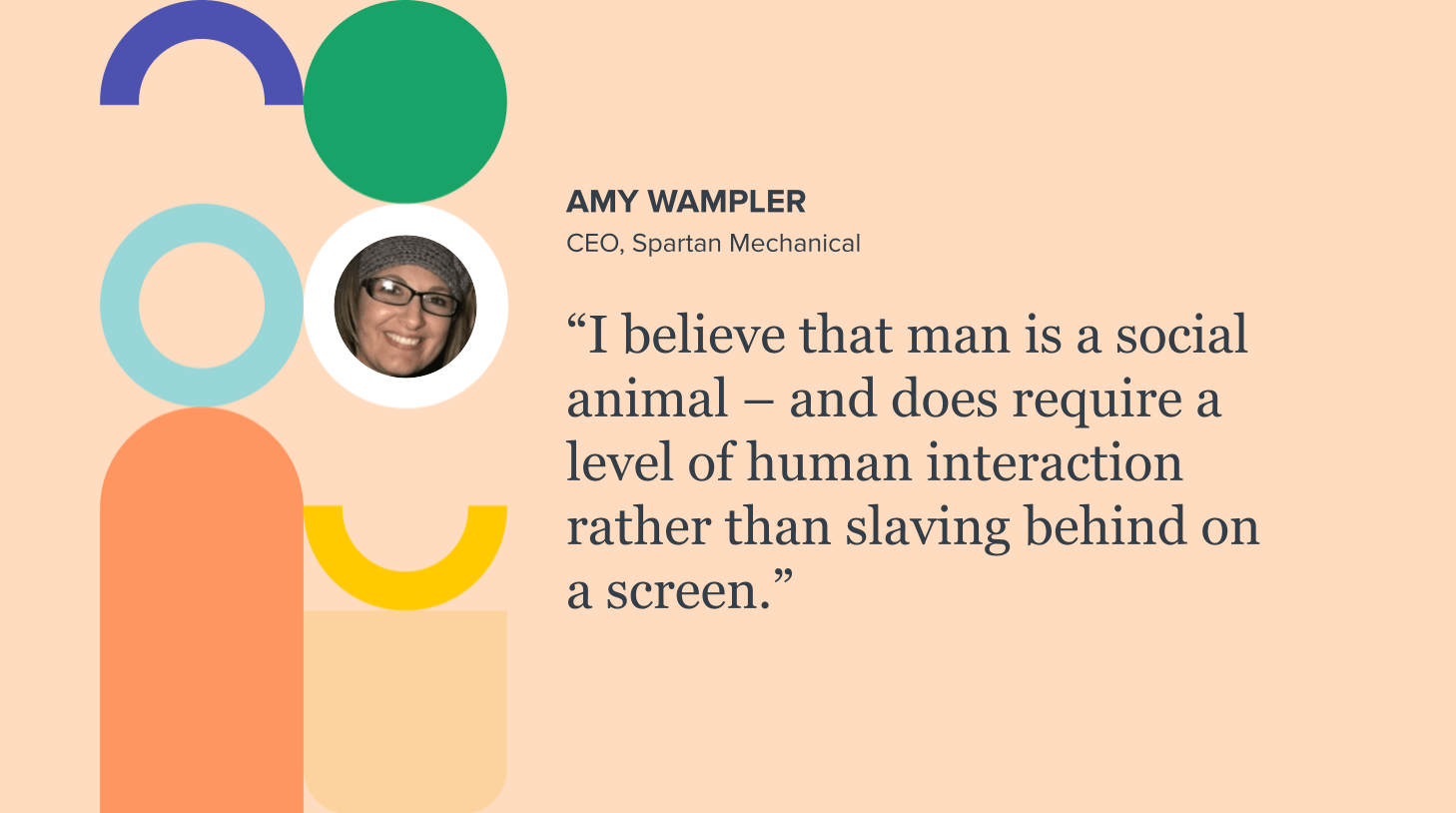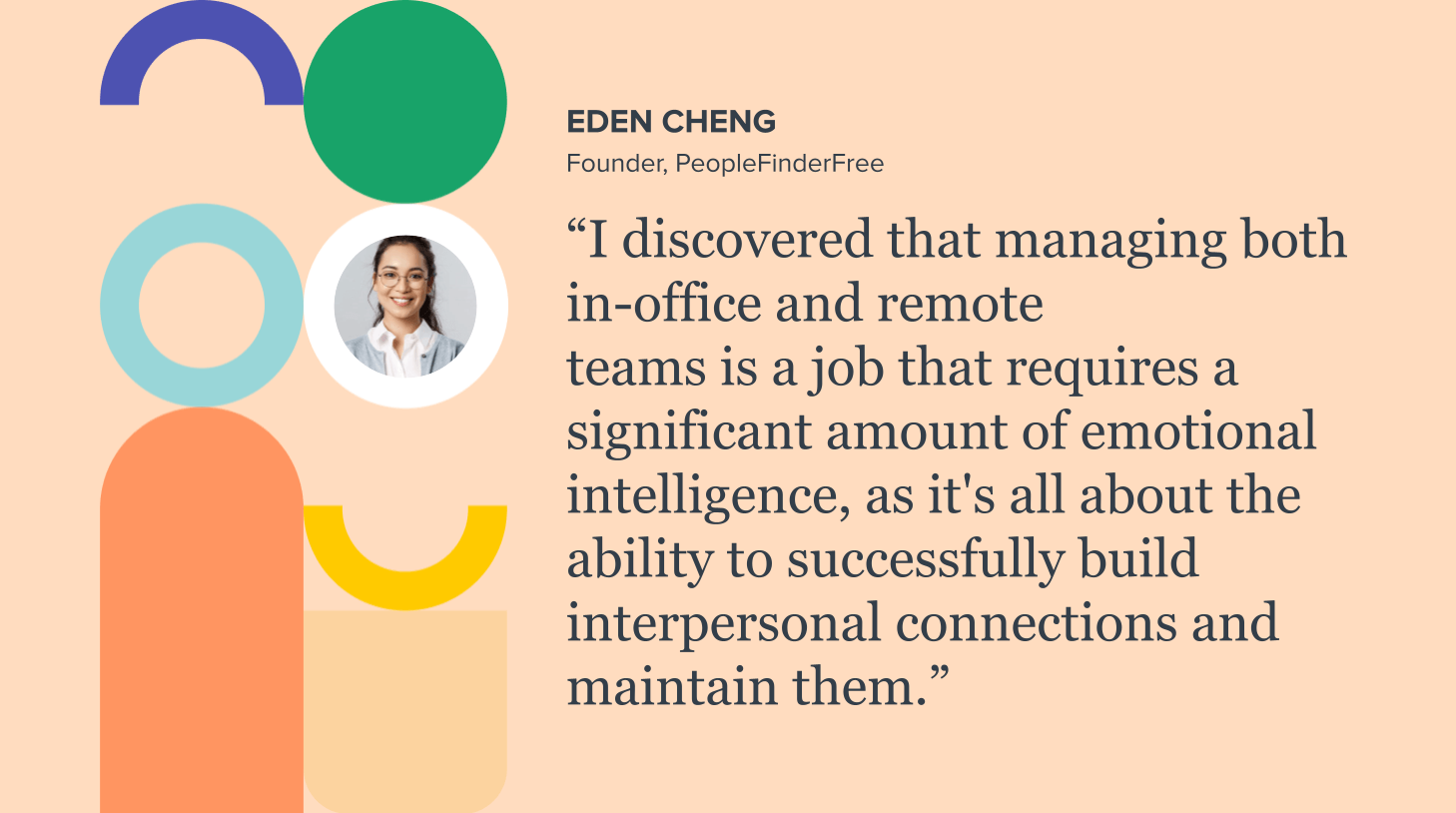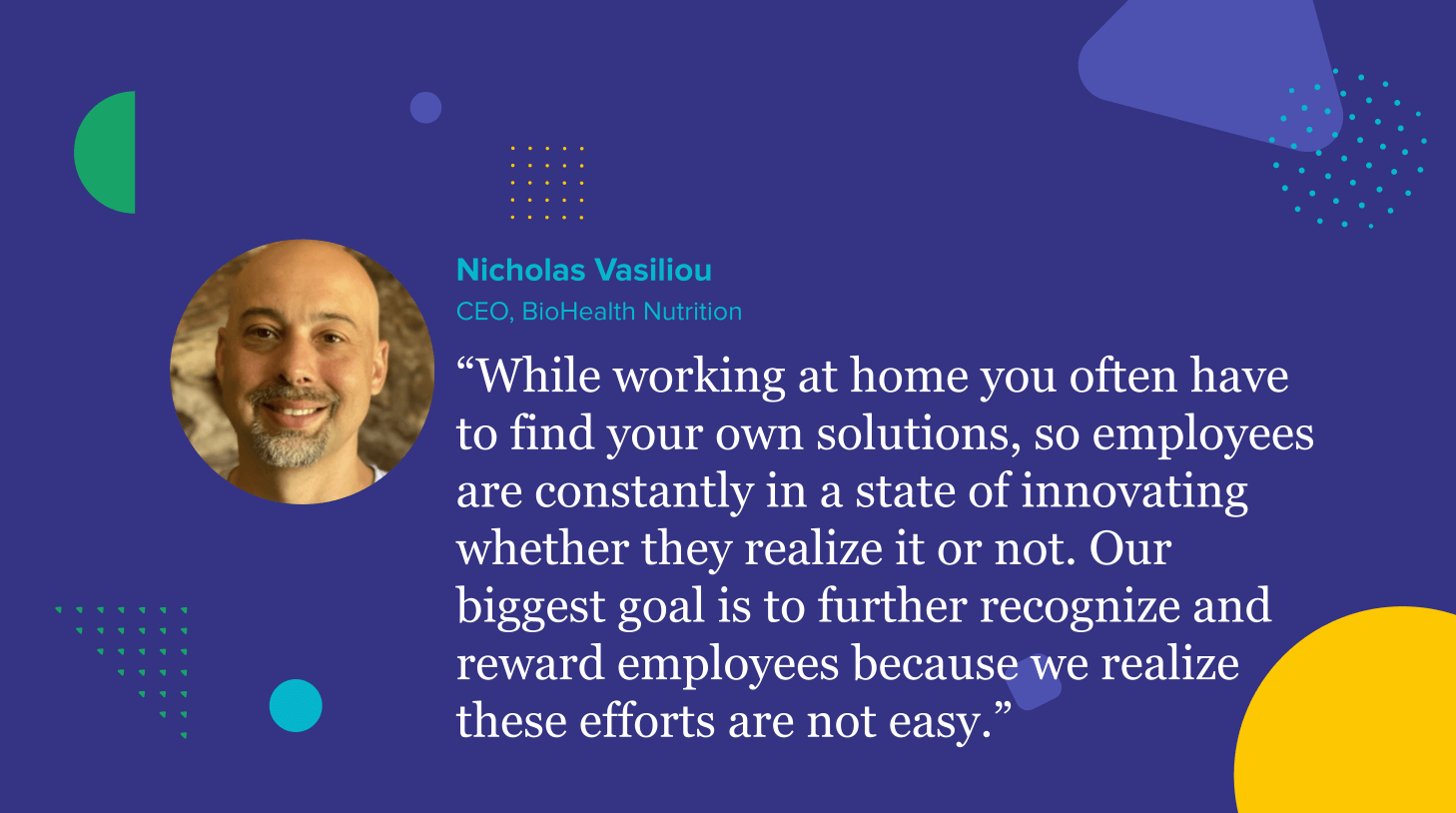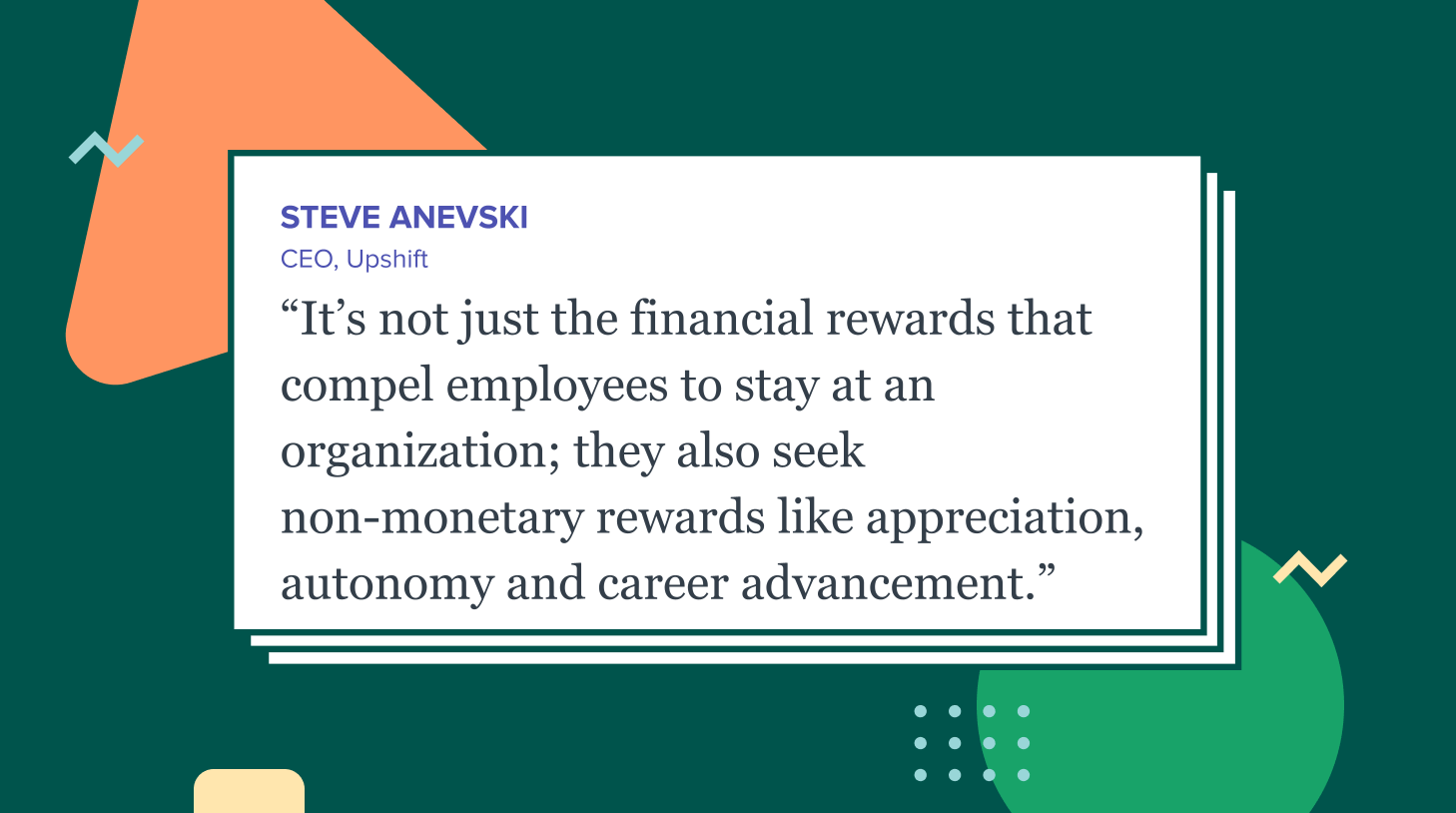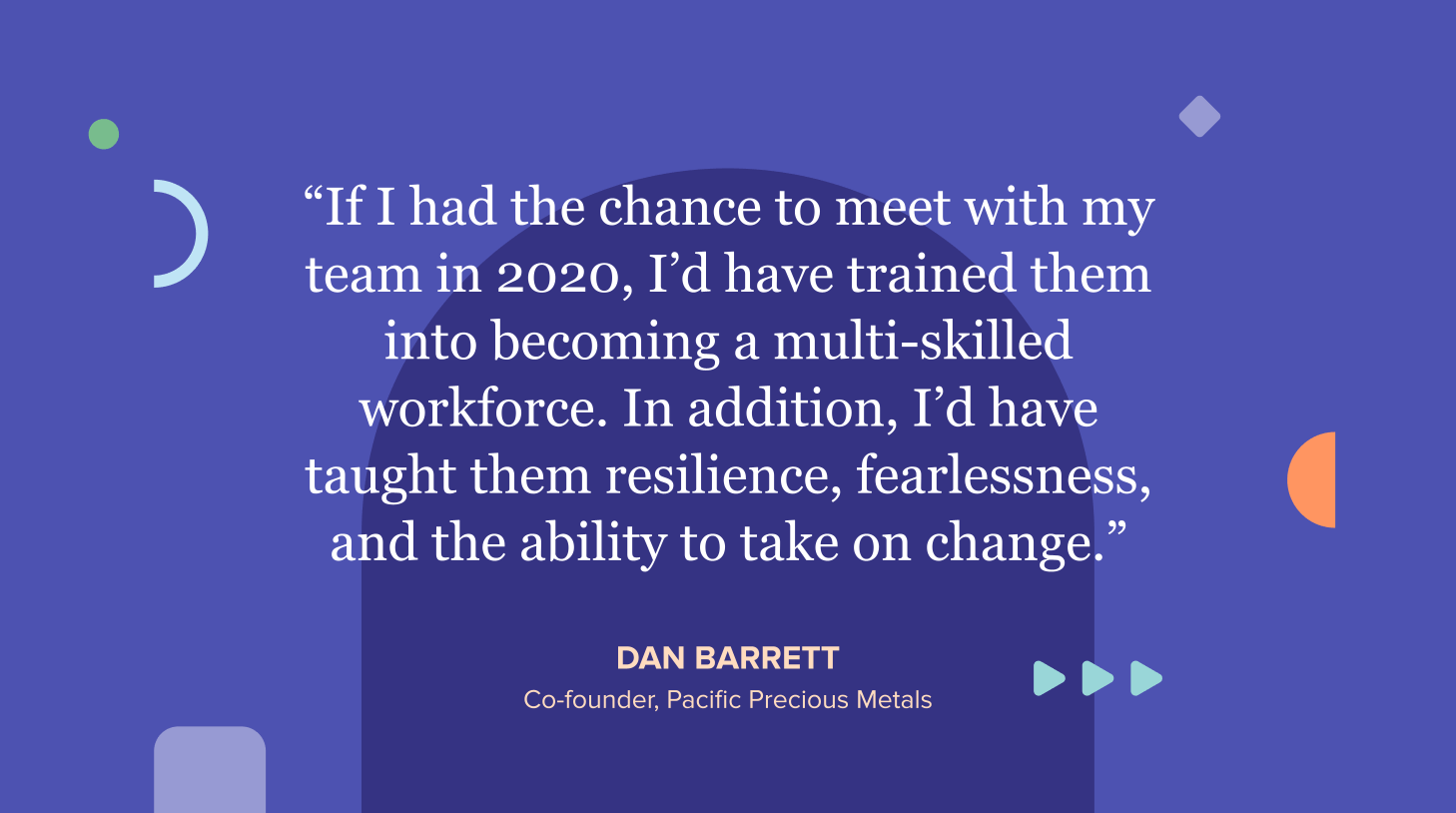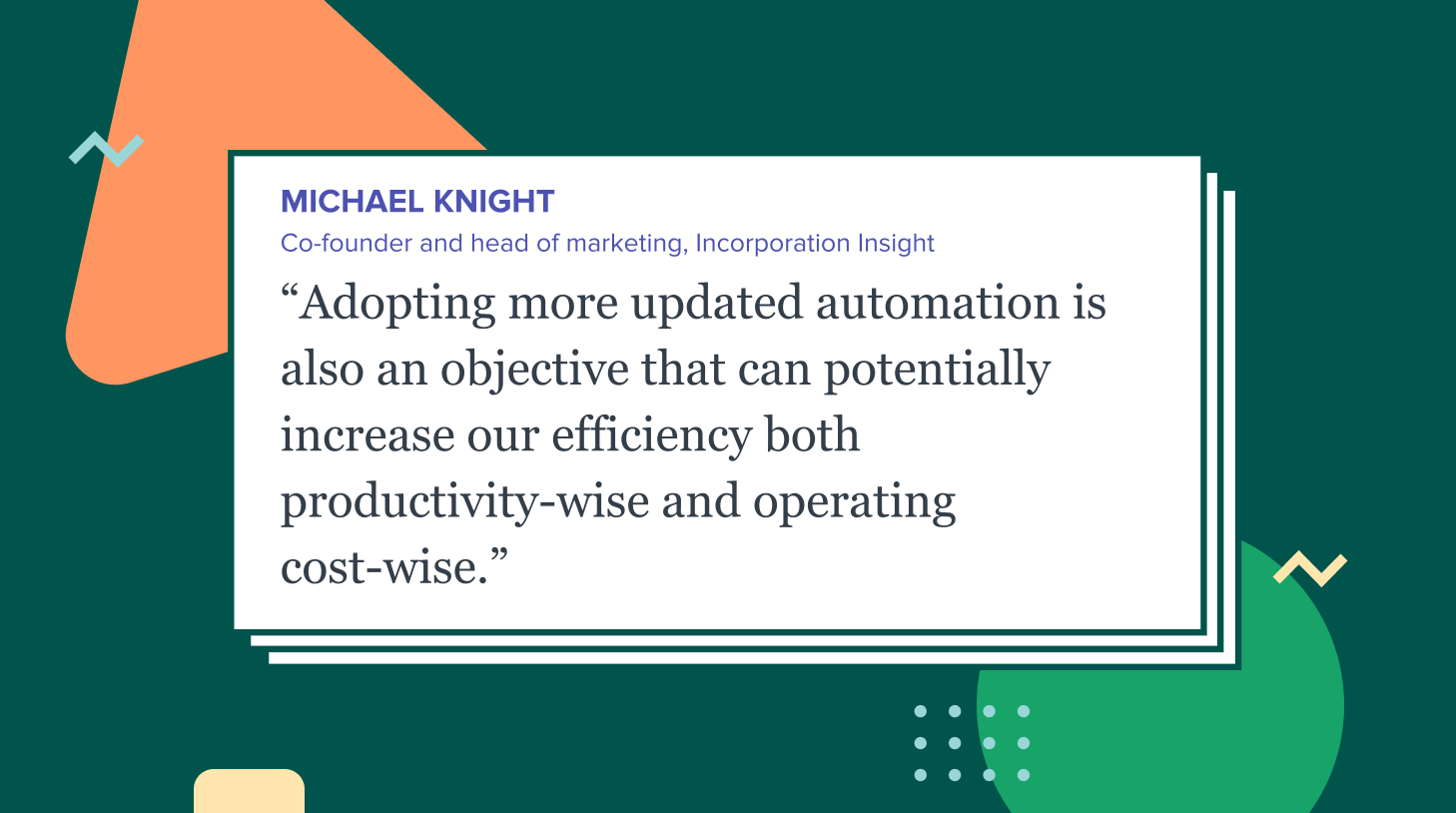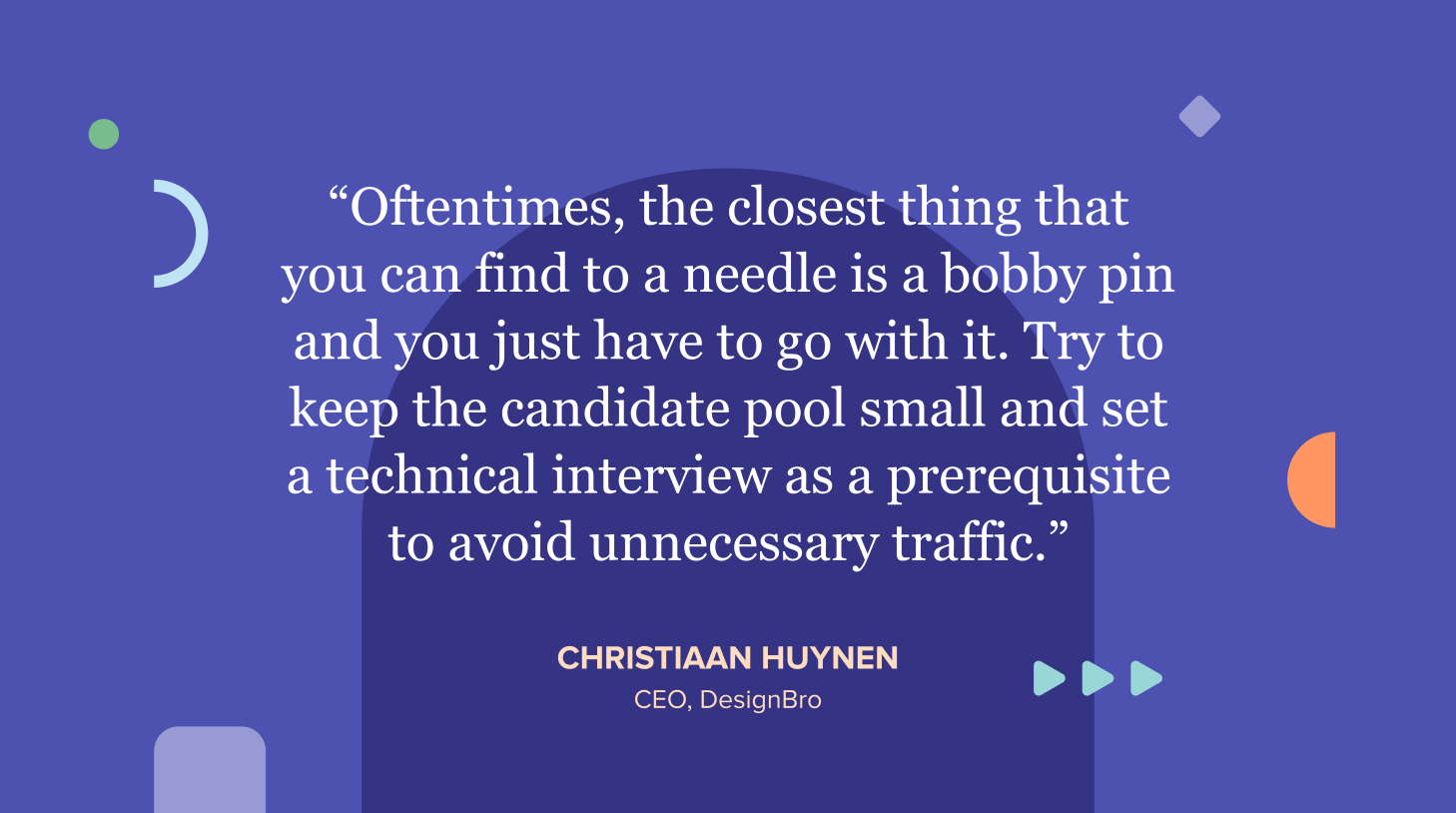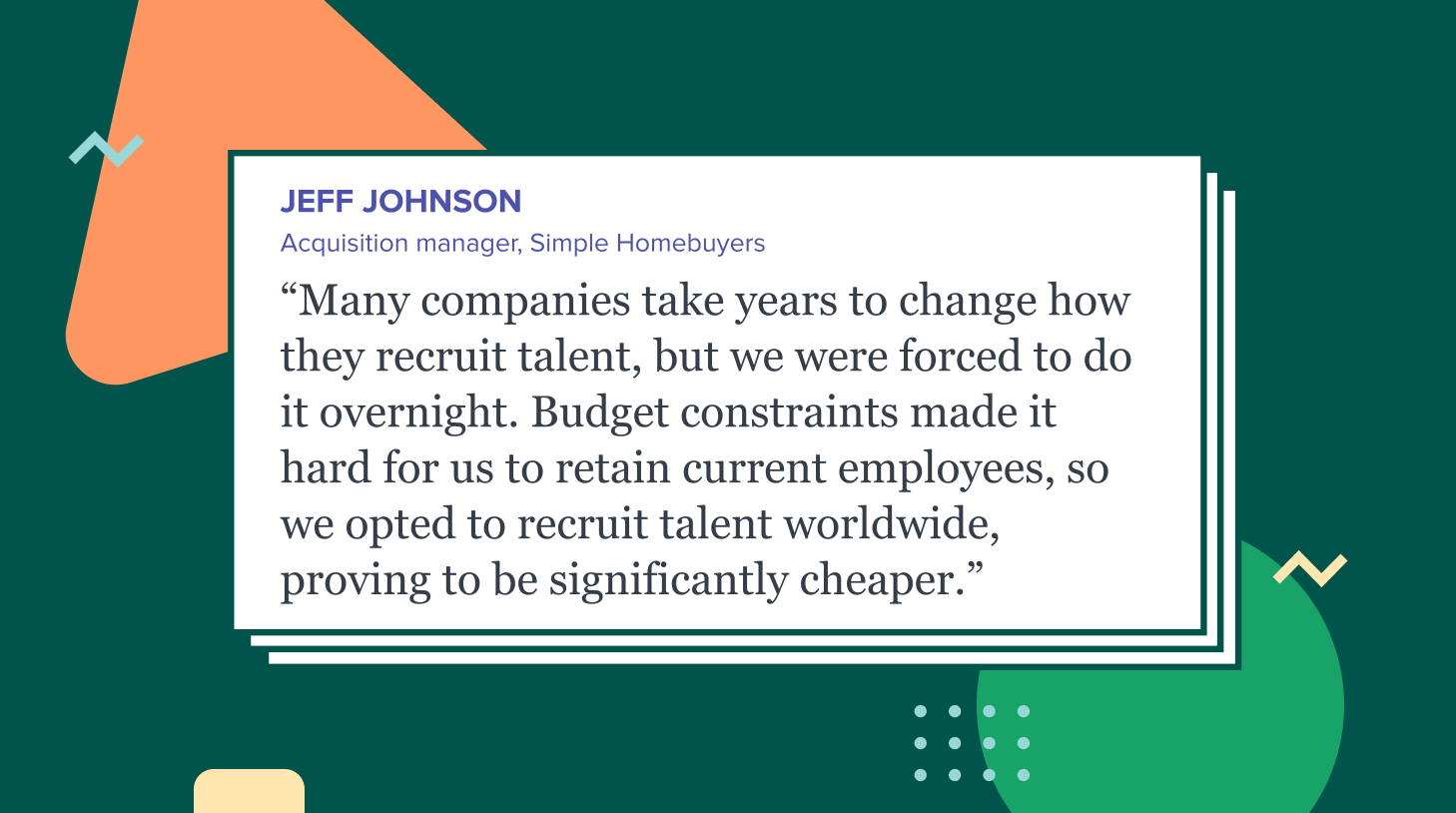Employers’ top wins and lessons of 2021 – and what they’re planning for 2022
It may be that hindsight is always 2020. Except it isn’t, because 2020 has kind of spilled over into 2021 – in other words, the challenges are still ongoing. Plus, 2021 is like 2020’s splitting hangover, bringing with it new and unforeseeable challenges for small and medium businesses worldwide – affecting their productivity, retention, workflows, logistics, and everything else under the sun.
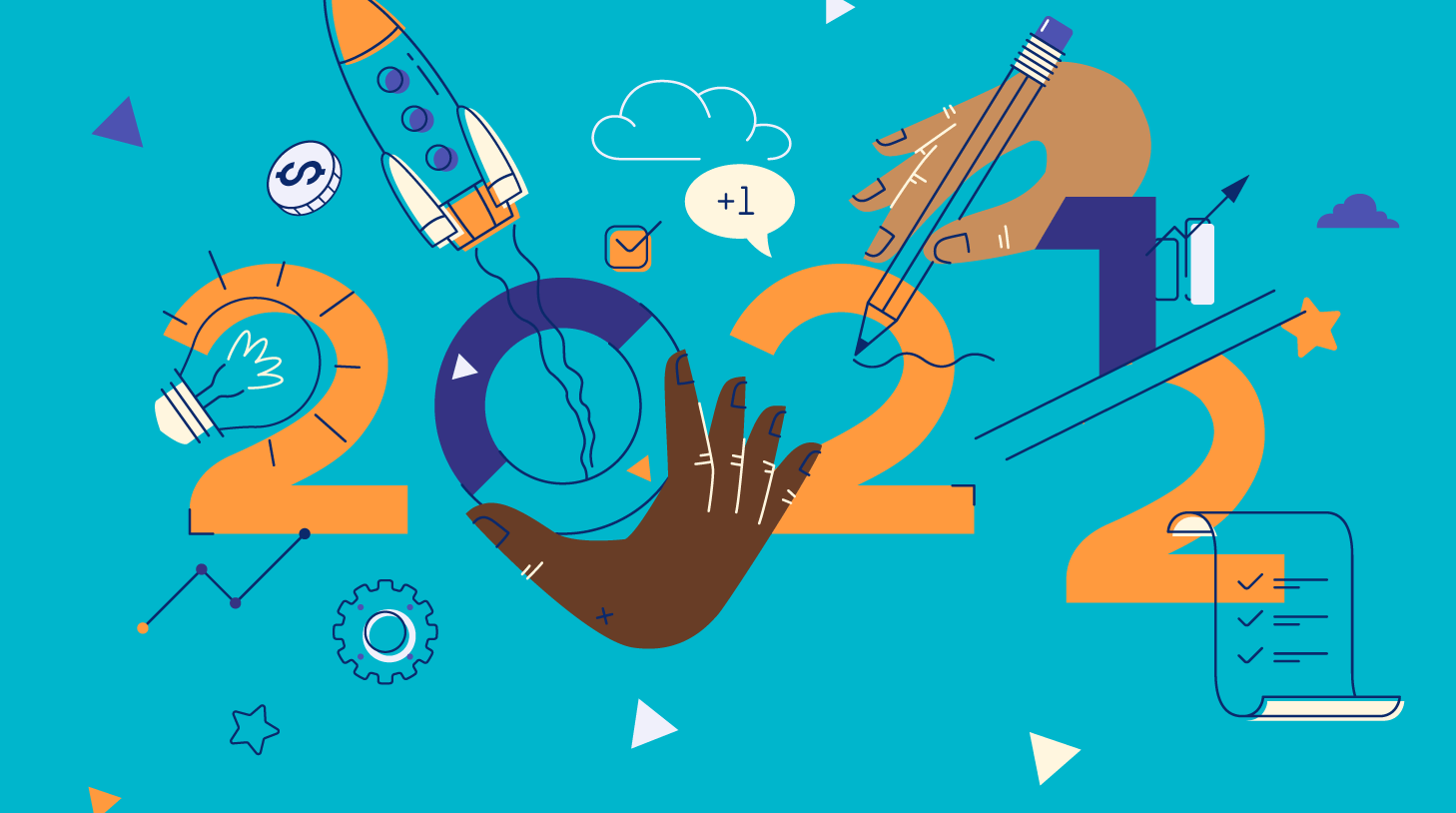
To understand all of it, we asked SMB employers what their biggest lessons of 2021 were and what their plans are going into 2022. More than 60 responded. And we’re sharing their top insights with you to support your own endeavors to plan for what’s hopefully a more stabilized 2022 – or at least, give you the wisdom to help you navigate the ongoing stormy seas.
Let’s look at the 11 main takeaways:
- The shakeup of the work environment
- We’re social animals; we have needs
- Surviving the Big Quit
- Healthy minds and bodies mean healthy outputs
- Look for the silver lining in all of this
- Think about your employees first
- Technology will pave the way ahead
- Work be nimble, work be quick
- Increase your range of motion
- Don’t be a manager – be a leader
- Change in hiring strategy
1. The shakeup of the work environment
Early in the pandemic, we learned via the New World of Work survey that more than 70% consider the shift to remote work to be the biggest paradigm shift as a result of COVID-19. So, it’s really no surprise that one of the biggest lessons of 2021 according to SMB employers continues in this vein: the shift to hybrid, remote, and asynchronous work.
But the real challenge is found in the logistics and feasibility of this shift.
CEO Amy Wampler of Indiana-based HVAC firm Spartan Mechanical found that a hybrid structure was the best way to go for her company, but remained skeptical that a completely remote environment could work.
“I believe that man is a social animal – and does require a level of human interaction rather than slaving behind on a screen.”
Because of that, Amy wants her employees to get the full hybrid experience.
“Therefore, I intend to introduce an efficient hybrid working model, where rotations of staff will be done in order to make sure that all employees get a taste of both types of situations!”
Giving employees a choice
Meanwhile, Lovebox founder and CEO Jean Gregoire is giving employees the choice of where they want to work.
“Right now, 5 of our employees are permanently teleworking from Lyon, Brest, Sydney, Paris, and Barcelonnette while the rest of the team is in Grenoble, France. The Grenoble team members have a comfortable office they can go to, but for the moment there is no obligation.”
But as the top boss at his tech-driven international love note messenger service, Jean does subscribe to Amy’s dictum that there needs to be some in-person exchange.
“We are thinking about setting up one or two mandatory days on site (for those who live near the office) to facilitate exchanges between the different divisions. This is a subject that is being discussed collectively to make sure it does not become a burden for anyone.”
Ultimately, he did find that his employees are happiest when given the choice of how and where they want to work.
The connectivity challenges of hybrid
On the other hand, founder Eden Cheng of software company PeopleFinderFree in Singapore found hybrid to be her top challenge of 2021, due to the management challenges.
“I discovered that managing both in-office and remote teams is a job that requires a significant amount of emotional intelligence, as it’s all about the ability to successfully build interpersonal connections and maintain them.”
It’s something that Eden’s especially mindful of with so many employees quitting during the Great Resignation.
“This meant making an effort to connect with each staff member on a more individual level through frequent dialogue, in order to ensure that they are satisfied with their current work environment and that they have what they need to deliver on the results.”
VP Logan Mallory also considers hybrid to be the biggest challenge faced at Motivosity, a company that helps employees stay engaged both in office and remotely.
“We had to find the right methods of communication to ensure that no one was ever left out of the loop due to their choice of working location,” says Logan, “as well as making sure that we had frequent enough check-ins with our employees.”
Remote work struggles – even now
Devin Schumacher of SEO agency SERP points to the lack of experience of workers in a remote working environment, calling it a relatively new concept for many and therefore the value isn’t readily evident for them.
He says his company, which is fully remote, bears the responsibility to ensure success in remote work.
“I help my new hires grasp the long-term employment possibilities at my company through extensive onboarding procedures and coaching sessions. My goal is to emphasize the full potential of remote work. I explain the handsome compensation package, offer competitive company benefits, and, of course, reassure new hires that they’ll have several career growth opportunities.”
There is a unique value in working from home, however, says CEO Nicholas Vasiliou of health supplement product company BioHealth Nutrition:
“While working at home you often have to find your own solutions, so employees are constantly in a state of innovating whether they realize it or not. Our biggest goal is to further recognize and reward employees because we realize these efforts are not easy.”
Mark Pierce, the CEO of Cloud Peak Law Group in Wyoming, points to added nuances in remote management.
“It took a bit of time to find the right balance of checking in with employees so that they didn’t feel over-managed or like they were being ignored.”
Time is of the essence
One significant challenge of remote work is teams working across different time zones, noted Stefan Ateljevic of PlayToday, an online gambling resource center.
“I think we struggled most with combining asynchronous and synchronous types of communication between team members, in order to function seamlessly.”
That was one lesson tech CEO Nate Tsang wishes he had learned earlier so he could have gotten ahead of the challenges associated with asynchronous work.
“I’d like to have started the conversation around asynchronous work sooner. There was a bit of hesitancy to move away from the 9-5 synchronous model of work, where everyone’s online at the same time of day, more or less,” says Nate, who runs WallStreetZen, a stock research and analysis site.
“Employees know which parts of their work need to be handled this way, but deciding what kinds of work can be staggered is often a process of discovery. You have to be looking for asynchronous opportunities to make them a reality.”
2. We’re social animals; we have needs
Amy at Spartan Mechanical pointed to the importance of social interaction – and we found that many SMB employers would agree.
For instance, Zoku International Co-Founder Hans Meyer in Amsterdam found from his research that the future of work needs human connection.
“Companies must facilitate in-person employee relationships in 2022 in order to keep individual talent and teams engaged, aligned and productive in this new era of remote work.”
This was also John Gardner’s lesson from 2021. He’s co-founder and CEO of Kickoff, a remote personal training platform based out of New York.
“[It’s] the importance of engaging our employees and using strategies to increase effective communication, share company culture and boost employee productivity despite the remoteness of the work.”
John shared one of his company’s tactics to ensure engagement.
“We started implementing a strategy where we create fitness challenges on social media. Each month, one of our trainers starts a fitness challenge video where they choreograph fitness movements to a video. The challenge is that the next person who does the challenge has to add on an extra movement, so the faster you participate, the less you do!”
He found this tactic worked, too.
“The videos are a lot of fun, people and teams do them together when they can and it really encourages employee productivity as well as shares a positive, fun environment and culture at the company.“
3. Surviving the Big Quit
If the mindset of employers could be summed up in one phrase, it would be from Maurice Sendak’s Where the Wild Things Are, where one of the Wild Things exclaims to a departing Max: “Oh please don’t go – we’ll eat you up – we love you so!”
That’s the spirit in the Big Quit environment, where employee retention is lauded as one of the biggest accomplishments of 2021 for many SMB employers.
Sally Stevens of FastPeopleSearch.io in Los Angeles is one of those employers – even going so far as to learn from others in the same situation.
“To think of it, the employee retention challenges faced by other companies have been big lessons for our business. We’ve had to change a lot in order to retain our employees. Ending the year with most of the employees we started with is certainly a success for us.”
It was a hard lesson for Sally’s small business, however.
“Lacking an adequate number of hands when you’re growing the business may be debilitating in many instances. That period almost crippled us. We had to hold back on some facets of our scaling process because we simply couldn’t find someone to deal with it.”
Show them you love them
Jeff Johnson, a real estate agent and acquisition manager at Simple Homebuyers in Maryland, resorted to tangible measures to retain employees in his company.
“We had to give out weekly bonuses, paid time off and subscriptions to mental wellness applications. This helped us manage and retain our existing talent.”
“We had to give out weekly bonuses, paid time off and subscriptions to mental wellness applications. This helped us manage and retain our existing talent.”
Steve Anevski’s own experience was not so much mitigation of turnover as it was actual improvement of retention – and this was a result of initiatives implemented prior to 2021.
“In 2021, my biggest accomplishment was increasing my company’s retention rate by a whopping 15%! Throughout 2019 and 2020, the rate was hovering between 70 and 75%, which I felt was relatively low and needed significant improvement. I worked on this and introduced a few attractive perks and benefits in late 2020 to great effect. Throughout 2021, my retention rates remained firmly between 85 and 90%.”
And in his work as CEO and co-founder of staffing platform Upshift, Steve says you have to really think about what your employees expect – and go higher than that.
“My biggest learning from 2021 in terms of employee retention is that if you go above and beyond in meeting the expectations of your employees, they’ll become more loyal to your company. It’s not just the financial rewards that compel employees to stay at an organization; they also seek non-monetary rewards like appreciation, autonomy and career advancement.”
And if the tangible parts of all this cost a lot of money, that’s fine, says CEO and founder Nick Drewe of WeThrift, an e-commerce and coupon site based in California. That’s because the ROI is obvious.
“Overall, it doesn’t matter if I get a bit generous with salaries and company benefits because employee retention still costs less than training new hires,” Nick explains. “They also produce better output. Better quality management ensures that my customers get the service they deserve.”
Keep your workers front of mind
Stefan at PlayToday also pointed to retention as his company’s biggest win in 2021, and that was because they adjusted the working model to be more employee-first.
”We followed their inputs and requests and made sure to make their workday as seamless as possible. This is how we opted for hybrid work and flexible schedules, but also included some perks such as childcare and home office stipends.”
And Logan at Motivosity points to the importance of a healthy, thriving, and inspiring work culture as the reason for his company’s 10% turnover rate.
“Every single one of the employees who left did so on good terms,” he says. “We attribute this to the fact that we truly live our workplace values and make our company a place where everyone is respected, employees are recognized and rewarded for their accomplishments, and flexibility is the norm.”
4. Healthy minds and bodies mean healthy outputs
Ahmed Mir, founder and editor of the self-proclaimed online coffee mecca Sip Coffee House, says one of his biggest plans for 2022 would be to emphasize a healthy interest and curiosity in work – but that overall health always comes first.
“I want my team to be comfortable enough to come to me whenever they feel overwhelmed so that we can find a solution that works for everyone. Nowadays, people often feel the need to overwork themselves, especially those who are working remotely, and I want to help ease them out of that mindset as productivity and the quality of work increases immensely when the people working on them are happy and healthy.”
Rather than looking at the raw math of employee retention as his company’s biggest accomplishment in 2021, co-owner Dan Barrett of Pacific Precious Metals pointed to mental health in employees that enables them to “work efficiently without pressure”.
Dan, who operates a chain of precious metal stores in and around San Francisco, says his biggest challenge “lay in the unpreparedness of the employees to take on challenges and the inability of many to contribute owing to their mental health.”
Gabriel Dungan of Charlotte, NC-based sleep company ViscoSoft aligns his employee health with his company’s product.
“As a company that sells sleep products, we have always encouraged people to take their sleep and self-care seriously, but it wasn’t until the pandemic hit that we truly realized how important this was for our team as well. This could be anything from weekly check-ins with members of your team, or even a team-wide virtual yoga class.”
5. Look for the silver lining in all of this
Albert Einstein once said: “In the midst of every crisis, lies great opportunity.”
That was also the mindset for many SMB employers throughout 2021.
Kamyar K.S., the CEO of business consultancy World Consulting Group in Florida, found that the skills gap faced by his business was an opportunity to try something new – such as offering more training and skills development for existing employees rather than simply trying to find new workers.
“In turn, that leads to a bigger pool of candidates with relevant skills and makes it easier for us to find them.*”
Nate at WallStreetZen ensures that new workforce additions have benefits beyond just backfill.
“We want to make sure additions to our workforce really create opportunities for other staff members. If it’s just about reducing workloads and taking tasks off someone’s plate then we can do that more quickly and easily with freelancers,” says Nate.
“When we need new know-how and outside experience to augment a team, that’s when you hire. Knowing the difference is tricky but it’s something we’re trying to improve.”
Dan, meanwhile, says he would have emphasized skills development in his existing worker base if he could do the year over again.
“If I had the chance to meet with my team in 2020, I’d have trained them into becoming a multi-skilled workforce. In addition, I’d have taught them resilience, fearlessness, and the ability to take on change.”
6. Think about your employees first
Notice a trend in what contributes to employee retention? Exactly – it’s the greater emphasis on employee well-being through benefits, compensation, development, and all the other stuff.
NY-based CEO Alex Mastin of the DIY barista resource site, Home Grounds, highlighted the importance of that.
“Try to provide your workers with opportunities for growth,” Alex says. “If they’re happy in their job and they know there are opportunities for advancement, they’re going to be more likely to stay with you.*”
CEO Mike Nemeroff of custom apparel brand Rush Order Tees in Philadelphia will take that employee-first mindset as well going into the next year.
“We’ve been working on a new strategy to help employees feel their importance and that they are the most important asset of our business and it has been working great so far.”
Get them involved
A two-way communication street is at the core of that strategy.
“This is by encouraging employees to share their opinion, propose new strategies and innovative ideas that can help improve the business,” Mike says. “Every month, we invite employees to come up with a new idea or a strategy that can improve our workflow and post it anonymously. During the month, we share these ideas and everyone in the company votes for the idea they think is best.”
And there’s incentive in it as well.
“Whoever wins is in charge of leading a team to implement their idea and give it a shot. This allows employees to feel trusted to be given a chance and trust that the company and employers believe in their skills regardless of their age, position, gender or experience.”
Lisa Richards, CEO and creator of The Candida Diet, which supports individuals with candida, is in the same boat and also plans to invest tangible resources to boost the experience of her team.
“Happy employees contribute to a company’s resilience and adaptability,” she says. “For this reason, a bigger portion of our annual budget will now be going towards maximizing employee satisfaction. It’s also important to ensure that the resources provided are compatible with the direct needs of the employees, so that they have the biggest impact on employee satisfaction, retention, and employee experience.”
Show confidence in your people
Michael Knight is co-founder and top marketing boss at business incorporation service Incorporation Insight in Salt Lake City. His 2022 will also include greater flexibility and a more employee-centric work model because, he says, there are clear benefits.
“An organization that is steadfast in prioritizing its employees’ satisfaction through generous and guilt-free PTOs and complimentary assisted access to mental healthcare is the goal.”
“An organization that is steadfast in prioritizing its employees’ satisfaction through generous and guilt-free PTOs and complimentary assisted access to mental healthcare is the goal.”
Jared Stern, who heads a team of 20 employees at Uplift Legal Funding in Santa Monica, California, also knows the value of employees in a business, highlighting their well-being as crucial.
“Employees are the linchpins of any organization,” says Jared, whose company provides legal loan services to clients. “We have braved through the past year, as we had committed employees. We want that to continue for us. We are taking all measures from our side to ensure they are prepared to tackle any adversity.”
Nate looked at output to identify opportunities to standardize and streamline the work his employees put in – with employee experience front of mind.
“We got serious about data productivity tracking for staff in early 2021. By mid-year we had a much stronger sense of where the gaps were and how to use automations, outsourcing, and freelancers to fill in the slack. Amid highs and lows, lulls and busy periods, our full-time staff have been able to remain steady and avoid burnout. That’s been a huge accomplishment, especially given the state of the world.”
Find out what they need and want
Meanwhile, Nicholas isn’t just taking initiative or planning strategy for employee happiness at BioHealth Nutrition. He’s also asking what employees themselves want.
“We’re currently conducting a survey about our work culture, team structure, and other company initiatives. We will accumulate all of the feedback at the end of the month and share a report with updates we plan to implement in 2022,” Nicholas says.
“We want employees to know that we take their feedback seriously and that their happiness is a priority. It’s really important for companies to embrace this mentality now if they haven’t already.”
Childcare was one of the biggest concerns voiced by employees throughout the pandemic, and Marina Vaamonde heard that as well from most of her employees at HouseCashin, an off-market house marketplace in Houston, Texas.
“Working parents are struggling to find decent and affordable childcare and need my help with it. Without childcare, the labor force will struggle because people will be forced to choose between working and quitting their jobs and staying home.”
7. Technology will pave the way ahead
Digital transformation was a significant development during the pandemic, with the shift to remote requiring more technology to succeed. But there’s more, says Kamyar at World Consulting Group.
“If you’re meeting with members of your team right now in terms of planning your workforce for 2022, this is the time to consider the impact of artificial intelligence, robotics and automation on what will be left for humans to do.”
Kamyar’s not concerned about the so-called rise of the machines, suggesting that it be embraced rather than feared.
“You can’t stop technology. It’s going to happen anyway. What you can do is prepare for it by planning for the time when your company won’t need as many human workers,” says Kamyar.
“What are the jobs that will be replaced? Will they all be replaced? What new positions will emerge? How do you train your workers of the future? How do you prepare them to stay ahead of the curve and avoid being replaced by a computer or a robot or an algorithm? You have to ask these questions now, not wait until 2027 — that’s too late.”
Nicholas highlights the importance of skills development in the workplace to accommodate the trend towards greater digital capabilities.
“Technology use is prime, and people need the internet more than ever. So, getting familiar with the new work approaches is key to success.”
“Technology use is prime, and people need the internet more than ever. So, getting familiar with the new work approaches is key to success.”
But finding the right tech to meet collaboration needs in the digital-first world was the single biggest challenge cited by Ruben Gamez, CEO and founder of SignWell, a B2B SaaS tech company helping businesses with contracts and legally binding e-signatures.
“Initially, we were experimenting with different tools,” says Ruben, who manages a team of 10 employees out of Portland, Oregon. “This led to scattered data. We then used one common tool to integrate all processes. It was very challenging to find the right tool.”
Challenge or not, Michael at Incorporation Insight says tech is core to his business going forward.
“Adopting more updated automation is also an objective that can potentially increase our efficiency both productivity-wise and operating cost-wise.”
And HR will be part of that
And this isn’t just the case for overall business operations and workforce management, according to Lynda Farley, the co-founder of reverse phone number lookup service NumLooker. While AI became accessible in 2021, she says, 2022 onwards will see a lot more of that in HR specifically.
“From 2022 onwards, there will be an increased adoption rate in social HR platforms. The reason for this development is the loss of trust between humans and machines. I’m not saying that AI will become our parents, but it can definitely help us in some aspects of our life. By 2022, there will be a lot more to come as a part of the digital revolution.”
8. Work be nimble, work be quick
“There are decades where nothing happens; and there are weeks where decades happen,” said Vladimir Ilyich Lenin.
That quote definitely holds true for the last couple of years especially for SMBs who have had to adapt regularly to a seemingly relentless barrage of unexpected developments during pandemic times.
CEO Ian Sells is clear on the importance of nimbility, as one of the biggest lessons at coupon/cash-back website RebateKey over the last two years.
“What we’ve learned from 2020 is to learn to be flexible and continuously adapt our processes based on what works,” says Ian, who heads up a team of just under 25 workers working full- and part-time, as well as per-project, in Wyoming. “Do not be afraid of changes and transitions.”
And there’s opportunity in that, Ian points out.
“Our team has experienced a lot of transitions and have done well not only to adapt to changes but to thrive in them. Scaling is always difficult, but is a crucial and necessary step for the continuous growth of any business.”
Flexibility took place in a different form for Gregory Rozdeba, president of digital insurance brokerage Dundas Life in Toronto. He called the COVID-affected year the most challenging of his managerial career, having to let go of a leadership team member.
Instead of having to go through that again, Gregory took on a different strategy – including moving some functions to remote and freelance.
And this includes employees too
A more agile approach also means encouraging more adaptability in employees – including tackling sudden and steep learning curves, says Dave Ericksen, the founder of WaterZen.
“Due to the crisis that the pandemic brought, a lot of our best performers were given additional responsibilities to help keep operations going,” says Dave.
That ultimately had a silver lining for his Utah-based company, which promotes awareness and shares information on accessibility to drinking water.
“Later, we discovered that some of them were more fit for their new responsibilities,” he says. “We’re changing our employee structure to give these gifted employees a role and title fit for their skills.”
Prime your people for success
Adjusting onboarding and training processes both for new hires and current employees was the biggest challenge of 2021, especially due to the volatility of the environment, says Gabriel at ViscoSoft.
“The pandemic required a lot of sudden pivots, so consistency in overall operations was kind of thrown out the window. You had to be malleable and adaptable. Because of these, developing any sort of training for your employees was very challenging,” he explains.
“You want to set up new hires for success by clarifying roles and encouraging relationship development, but when a company is dealing with constant shifts and transitions that can be very difficult.”
And forget about thinking back and looking forward, says Jared at Uplift Legal Funding.
“The biggest learning from 2021 was to be in the moment. We made grand plans in 2020, only to watch them fail. We have learned to become more agile and dynamic. We intend to make plans, but we have also known how to pick ourselves up if things go south. We are planning to continue the same in 2022.”
“The biggest learning from 2021 was to be in the moment. We made grand plans in 2020, only to watch them fail. We have learned to become more agile and dynamic. We intend to make plans, but we have also known how to pick ourselves up if things go south. We are planning to continue the same in 2022.”
And that mindset – with teamwork – can get us through it all, he adds.
“I’d say, here’s a chance to think on our feet. Let’s try to be more open-minded and adaptive. Let’s also remember to stick it out for each other. That’s the only way we will get through this madness.”
9. Increase your range of motion
Gregory at Dundas Life pointed to the diversity that comes with the global talent market as a huge bonus for companies.
“Diversity and inclusion is one critical insight in 2022 to manage an employee base. Companies worldwide should learn to diversify their employee retention this year as a workforce with unique skills is invaluable. It makes the potential of growth for each employee scalable, and they can learn new skills from their peers along the way.”
As CEO of secure e-sign service CocoSign, Stephen Curry also found the value of having workers from different decades was a crucial lesson picked up from 2020 and 2021.
“You’re able to capitalize on their unique experiences in different decades and accurately gauge the sorts of issues they’ll help you overcome in whatever decade you’re trying to make your mark,” Stephen says.
It all comes down to experience.
“Say, for example, an eighties employee helps you run a successful business in the nineties. That’s good. But if a fifties employee helps you run a successful business in 2022, that’s even better, because fifties employees have been through all this once before, so they’ll help you steer away from the mistakes of the past and point out things that worked best for them during the first time around.”
Paul Sherman is CMO at auto warranty service Olive, which employs more than 50 people in Chicago. He learned the value of age diversity the hard way.
“Many of my team members retired early in 2020 and 2021. While many companies tend to be ageist and prefer younger employees, I lost a wealth of experience and wisdom through the retirement of these workers.”
10. Don’t be a manager – be a leader
SMBs also took a long hard look at employee management styles, again as a result of developments during the pandemic.
Eden at PeopleFinderFree suggests breaking down the traditional structure of top-down leadership, saying it’s part of “preparing for a long-term eventuality”.
“From a leadership standpoint, it will be best to just get rid of hierarchical structures and instead, focus on implementing multidisciplinary and autonomous teams that are able to operate without micromanagement. In other words, place more of an emphasis on shifting your current management responsibilities and distributing them throughout the organization.”
Gabriel wishes he and his team had taken on a more collaborative approach to work.
“The pandemic has meant having to make constant decisions without really being able to predict the outcome. Having a collaborative and supportive team not only makes for a fantastic workplace culture, but makes those difficult decisions much easier.” Gabriel says. “Remember, there is a way for employees to have autonomy over their work, while still working closely and collaborating with others.”
And the irony is that Gabriel sees this as a top-down initiative.
”I would tell myself that as a leader, it is up to me to set the precedent. A collaborative workplace needs to be fostered.”
”I would tell myself that as a leader, it is up to me to set the precedent. A collaborative workplace needs to be fostered.”
And empathy has huge, huge value
Meanwhile, one of the biggest lessons from 2020 for Sally of FastPeopleSearch.io was the need for empathetic leadership in the workplace – it’s something that can’t be overlooked.
”Quite often, business leaders get lost in the hustle and forfeit the personal connection between them and the employees. This plays a huge role in lowering team morale and decreasing productivity within the workplace.”
Being empathetic also makes her a better manager and enables her to bring more out of her workers.
“Practicing empathetic leadership over the past year has taught me valuable lessons in soft-skill management, and how employee morale plays a crucial role in creating a vibrant culture within the workplace.”
11. Change in hiring strategy
One of the big developments of 2021 is, of course, the Great Resignation. Quit rates are through the roof – and companies have had to adapt quickly to the sudden onslaught of vacancies and need for backfills.
This meant an update in hiring strategy for many businesses, including CEO Dragos Badea of Yarooms, a hybrid work management software.
Dragos’ plan? “Hire for all positions as early as possible, as we’re going to be experiencing a bit of a shortage of qualified personnel!”
The reason being, as the adage goes, ‘done is better than perfect.’
“Even if you hire a specialist that might be working at 50% capacity initially,” says Dragos, “just having more hands on deck when opportunity comes knocking is incredibly valuable.”
Christiaan Huynen’s hiring approach as the CEO of DesignBro is similar.
“Hiring a perfect candidate is like finding a needle in a haystack. Oftentimes, the closest thing that you can find to a needle is a bobby pin and you just have to go with it. Try to keep the candidate pool small and set a technical interview as a prerequisite to avoid unnecessary traffic.”
But there’s a danger in quick backfill for stopgap purposes, as Dave at Waterzen learned.
“One of the biggest challenges we’re going to be facing in 2022 is getting rid of pandemic hires,” says Dave. “The labor supply shortage caused us to hire people who weren’t the best for the job. We were in need of employees and hired those that just fit the bill. In 2022, when the shortage will finally end, we’ll have to let go of staff who cannot meet expectations and rehire for those roles.”
Add new channels to the pipeline
One potential solution is internal mobility, according to Ian at RebateKey.
“We’ve scaled so much as a company this year and required new roles to be filled. However, instead of hiring an outsider, we opted to look for potential applicants from stellar members from our current team, who have at least some working knowledge, interest, and bandwidth to take on new roles.”
Ian, incidentally, also turned to less traditional methods of finding talent when looking outside of his organization.
“Instead of the known job boards, we’ve ventured into using Slack and Discord groups, and more importantly FB niched groups. These places are teeming with potential. Many applicants do not want to use regular job boards because they lowball employees, not to mention having very high competition.”
Jared also turned to these channels as a solution.
“Our single biggest accomplishment was recruiting new employees using social media as one of our primary recruitment channels. We’ve heard about social media recruiting as a strategy, but we were skeptical if it would work. Using multiple channels on a trial and error basis has been the quickest way to employ a diverse pool of talent.”
And Paul at Olive went directly to the source of new talent.
“Our biggest achievement was to partner with the marketing department of a local university. This partnership creates a pipeline of talent from the university by creating internships and permanent positions for graduating students with marketing degrees. This way, we’re less vulnerable to the labor market shocks like those we see with the Great Resignation.”
A deluge of talent
Dan Barba, who provides writing and editing services at DanBarba.com, had the opposite problem – that of too many candidates.
“When I posted job openings throughout 2021, it wasn’t uncommon for me to receive multiple hundreds of applications from people looking for freelance work. With so many applications to sift through, these hiring rounds would take up a lot of my time and pull me away from revenue generating activities,” he says.
And he had a solution: giving candidates the opportunity to screen themselves in or out.
“Through the lens of hiring and human resources, my biggest accomplishment was finding a way to make these applicants ‘pre-qualify’; in other words, making sure that only the top 1% of the talent pool apply.”
To do this, Dan rewrote the job copy he was using.
“My first version was too vague in terms of expectations and day-to-day responsibilities, so I focused on going into greater detail and getting clear on the skills and experience that candidates must have before applying. I didn’t list desirables, just must-haves and deal breakers.”
“My first version was too vague in terms of expectations and day-to-day responsibilities, so I focused on going into greater detail and getting clear on the skills and experience that candidates must have before applying. I didn’t list desirables, just must-haves and deal breakers.”
And it made a difference.
“By giving applicants this kind of context, they were better equipped to evaluate their own ability against the standards that I laid out. As a result, the quality of my hires shot up in Q4, as did their rate of output and productivity.”
Glen Bhimani owns and operates BPS Security, a security firm in San Antonio, Texas. He also pointed to the importance of a well-crafted job ad.
“I have found that thinking through the kind of person we want to hire and crafting job postings that appeal to that kind of person is extremely effective in cutting down the time we have to spend searching for guards,” says Glen, whose firm employs just under 30 employees.
“Different people respond well to different kinds of English [and other languages], so designing a job posting inside the communication style of our ideal employee helps raise the success rate of job postings.”
The digitization of hiring
One huge aspect of recruitment is the incorporation of tech into the process, says Michael.
“Technology played a significant role in helping us efficiently screen candidates and onboard new members without being physically present. It was another milestone to now permanently integrate advanced tech into our hiring process in place of our traditional recruitment practices.”
Jeff at Simple Homebuyers pointed to changes in his recruitment process as his single biggest achievement of 2021.
“Many companies take years to change how they recruit talent, but we were forced to do it overnight. Budget constraints made it hard for us to retain current employees, so we opted to recruit talent worldwide, proving to be significantly cheaper.”
And yes, tech supported this.
“[That] included virtual interviews, global recruitment, and asynchronous working hours. This proved to be vital as we had access to talent worldwide.”
Technology also benefited Logan at Motivosity, who found an innovative solution in identifying the potential of a candidate for a job.
“A hiring hack that’s been helpful for us is: Asking candidates to record an introductory video in lieu of a cover letter. This helps us see a candidate’s personality, and it allows them to share more about themselves than they’d be able to just by writing a cover letter. It also helps us weed out candidates who haven’t fully read the job application.”
You know what to do going into 2022
There you have it. Myriad challenges of 2020 and 2021 being overcome with innovative solutions and strategies – that’s the spirit of entrepreneurship.
And it’s always good to have a well-thought-out strategy going into 2022, but leaving room for quick pivots in that strategy as needed, because who knows what might happen.
Want to share your own story of what you’ve learned over the last couple of years and what you think will happen in 2022? We want to hear it – and share it with our millions of readers. Submit your pitch and you may see your name – and your company’s – in lights!

